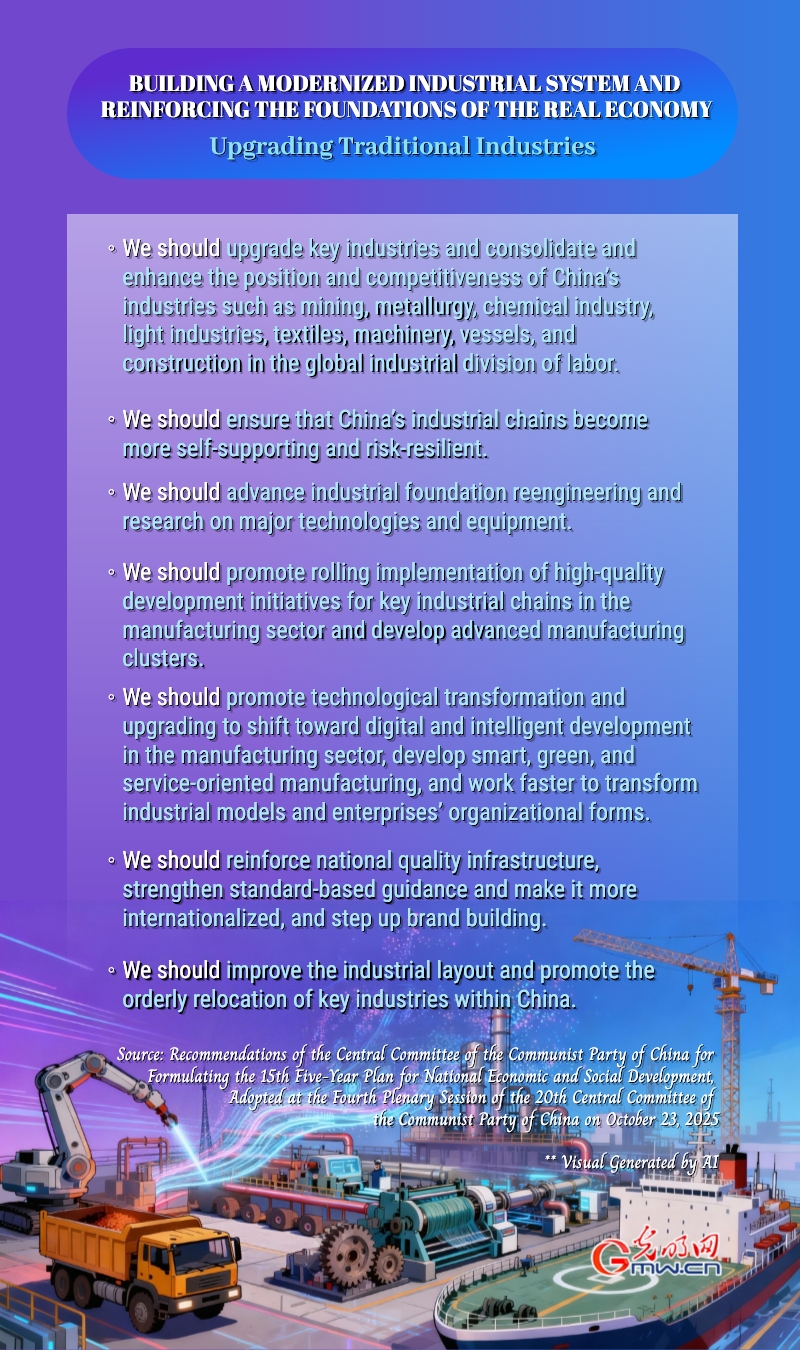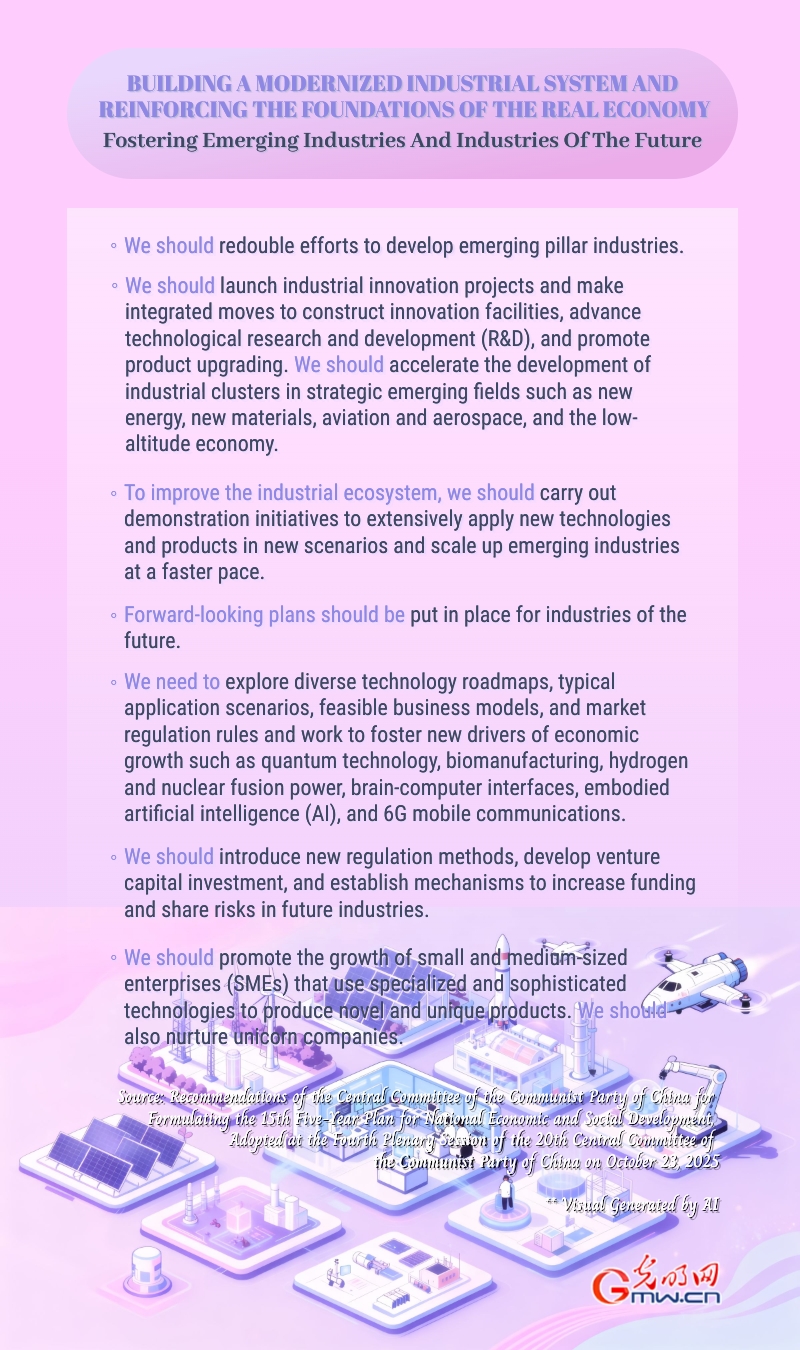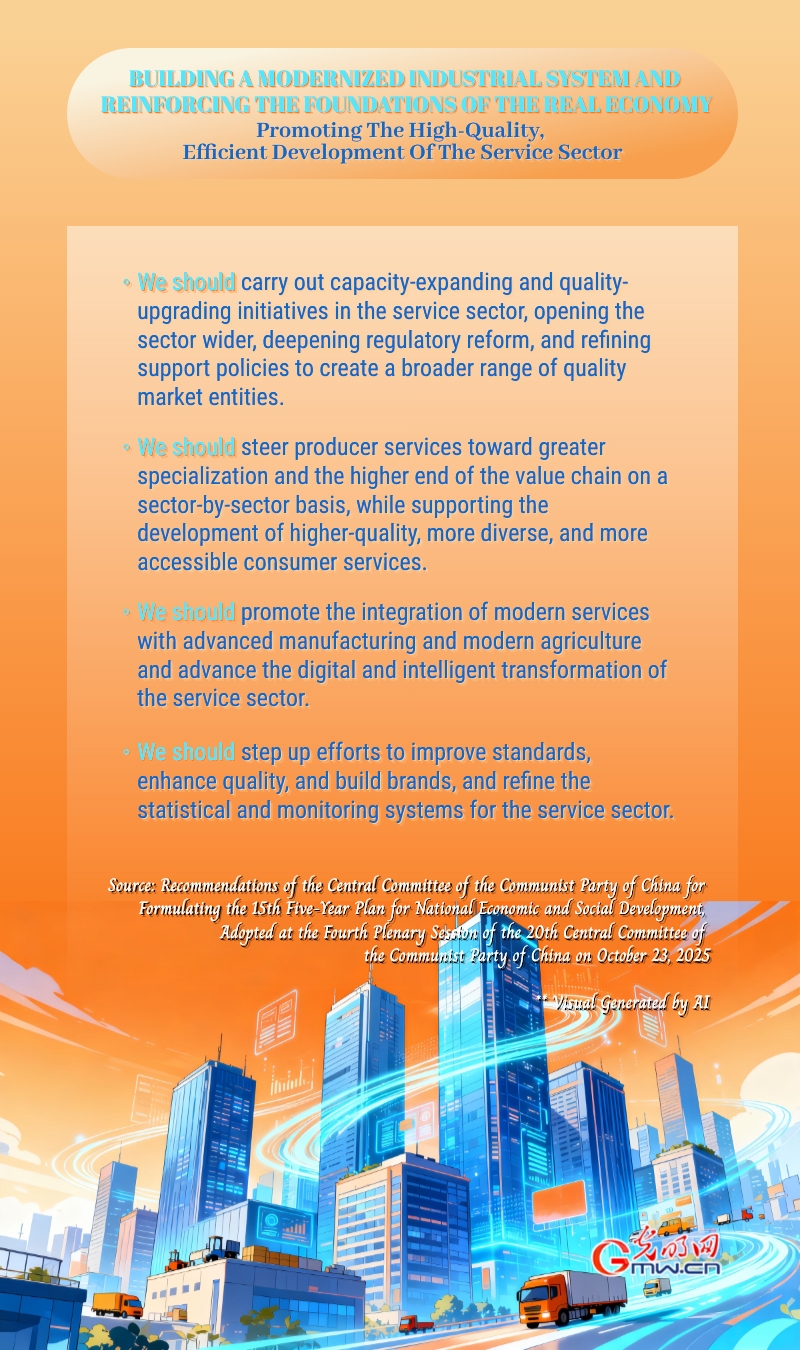

On October 23, 2025, "Recommendations of the Central Committee of the Communist Party of China for Formulating the 15th Five-Year Plan for National Economic and Social Development" was adopted at the Fourth Plenary Session of the 20th Central Committee of the Communist Party of China.
The recommendations are based on an in-depth analysis of the international and domestic landscapes. The third chapter emphasizes building a modernized industrial system and reinforcing the foundations of the real economy. The main points are outlined below.

-- Upgrading traditional industries
We should upgrade key industries and consolidate and enhance the position and competitiveness of China’s industries such as mining, metallurgy, chemical industry, light industries, textiles, machinery, vessels, and construction in the global industrial division of labor. We should ensure that China’s industrial chains become more self-supporting and risk-resilient. We should advance industrial foundation reengineering and research on major technologies and equipment. We should promote rolling implementation of high-quality development initiatives for key industrial chains in the manufacturing sector and develop advanced manufacturing clusters.
We should promote technological transformation and upgrading to shift toward digital and intelligent development in the manufacturing sector, develop smart, green, and service-oriented manufacturing, and work faster to transform industrial models and enterprises’ organizational forms. We should reinforce national quality infrastructure, strengthen standard-based guidance and make it more internationalized, and step up brand building. We should improve the industrial layout and promote the orderly relocation of key industries within China.

-- Fostering emerging industries and industries of the future
We should redouble efforts to develop emerging pillar industries. We should launch industrial innovation projects and make integrated moves to construct innovation facilities, advance technological research and development (R&D), and promote product upgrading. We should accelerate the development of industrial clusters in strategic emerging fields such as new energy, new materials, aviation and aerospace, and the low-altitude economy. To improve the industrial ecosystem, we should carry out demonstration initiatives to extensively apply new technologies and products in new scenarios and scale up emerging industries at a faster pace.
Forward-looking plans should be put in place for industries of the future. We need to explore diverse technology roadmaps, typical application scenarios, feasible business models, and market regulation rules and work to foster new drivers of economic growth such as quantum technology, biomanufacturing, hydrogen and nuclear fusion power, brain-computer interfaces, embodied artificial intelligence (AI), and 6G mobile communications. We should introduce new regulation methods, develop venture capital investment, and establish mechanisms to increase funding and share risks in future industries. We should promote the growth of small and medium-sized enterprises (SMEs) that use specialized and sophisticated technologies to produce novel and unique products. We should also nurture unicorn companies.

-- Promoting the high-quality, efficient development of the service sector
We should carry out capacity-expanding and quality-upgrading initiatives in the service sector, opening the sector wider, deepening regulatory reform, and refining support policies to create a broader range of quality market entities. We should steer producer services toward greater specialization and the higher end of the value chain on a sector-by-sector basis, while supporting the development of higher-quality, more diverse, and more accessible consumer services. We should promote the integration of modern services with advanced manufacturing and modern agriculture and advance the digital and intelligent transformation of the service sector. We should step up efforts to improve standards, enhance quality, and build brands, and refine the statistical and monitoring systems for the service sector.

-- Developing a modernized infrastructure system
Infrastructure planning should be better coordinated to improve its layout and structure, drive integrated development, and ensure that infrastructure is safe, resilient, and sustainable. New types of infrastructure should be built with appropriate forward planning. Information and communication networks, the national integrated computing network, major science and technology infrastructure, and other key systems should be further developed and used intensively and efficiently. Traditional infrastructure should be upgraded and retrofitted with digital and intelligent technologies.
We should improve the modern integrated transportation system, strengthening cross-regional coordination and planning, promoting multimodal integration, and improving transportation links and services in remote areas. We should enhance the diversity and resilience of international transportation routes. In the energy sector, efforts should be made to optimize the layout of primary arteries and develop new types of infrastructure. We should accelerate the development of a modern water network and enhance our capacity to prevent floods, coordinate the allocation of water resources, and ensure water supply in both urban and rural areas. We should continue to develop dual-use public infrastructure that can accommodate emergency needs in the cities.
点击右上角![]() 微信好友
微信好友
 朋友圈
朋友圈

请使用浏览器分享功能进行分享
